People around the globe are experiencing dramatic heatwaves, deadly floods and wildfires as a result of climate change.
The UK and parts of Europe have seen temperatures of above 40C this month, leading to transport disruption and water shortages.
Emissions caused by the burning of fossil fuels have been trapping heat in the atmosphere since the start of the industrial era. This extra heat isn’t evenly distributed across the globe, and bursts out extreme weather events.
Unless global emissions are cut, this cycle will continue.
Here are four ways climate change is changing the weather.
1. Hotter, longer heatwaves
To understand the impact of small changes to average temperatures, think of them as a bell curve with extreme cold and hot at either end, and the bulk of temperatures in the middle.
A small shift in the centre means more of the curve touches the extremes – and so heatwaves become more frequent and extreme.
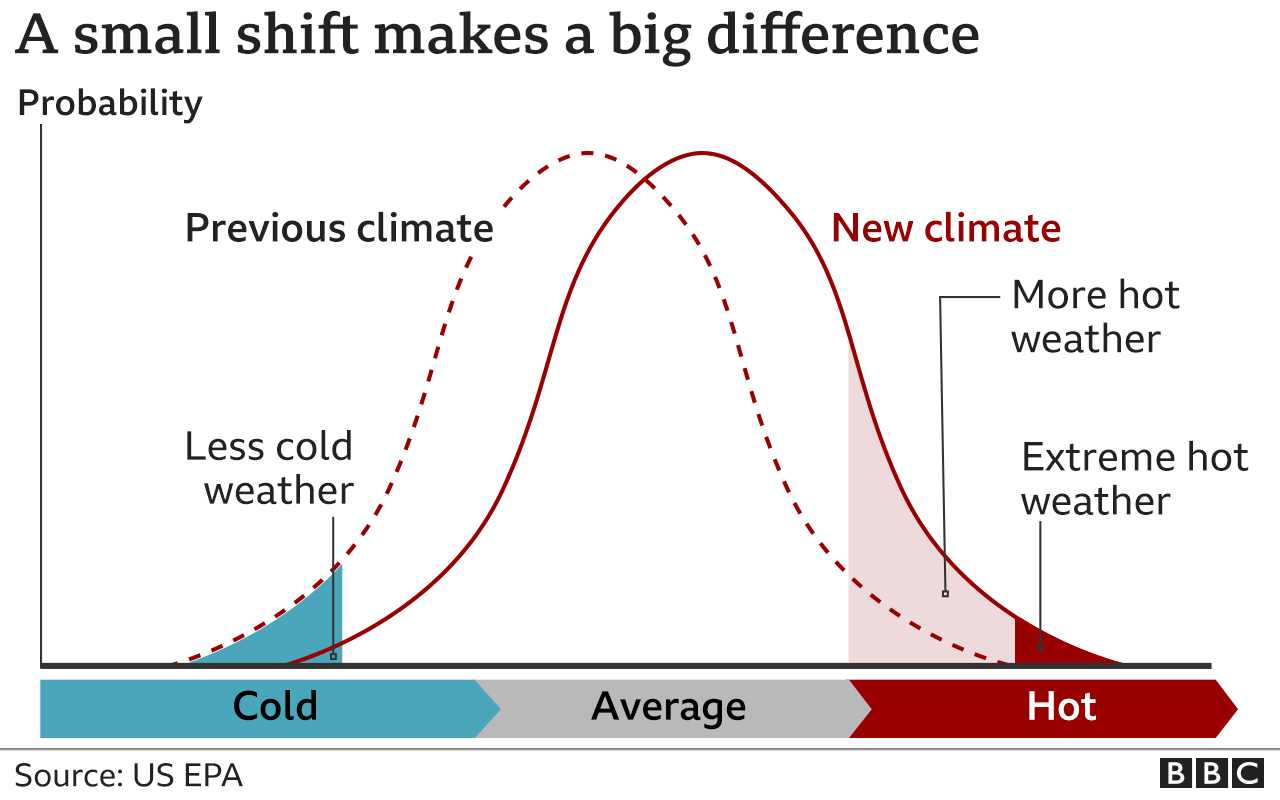
Temperatures in the UK topped 40C for the first time on 19 July.
The Met Office estimates that the extreme heat seen during the most recent heatwave is ten times more likely now because of climate change. And things could worsen.
“In a few decades this might actually be a quite a cool summer,” says Professor Friederike Otto, a climate scientist at Imperial College London.
The Met Office has also pointed out that heatwaves are not just hotter: They’re also lasting longer. Warm spells have more than doubled in length in the past 50 years.
Heatwaves can be made longer and more intense by another weather phenomenon – a heat dome.
In an area of high pressure, hot air is pushed down and trapped in place, causing temperatures to soar over an entire continent.
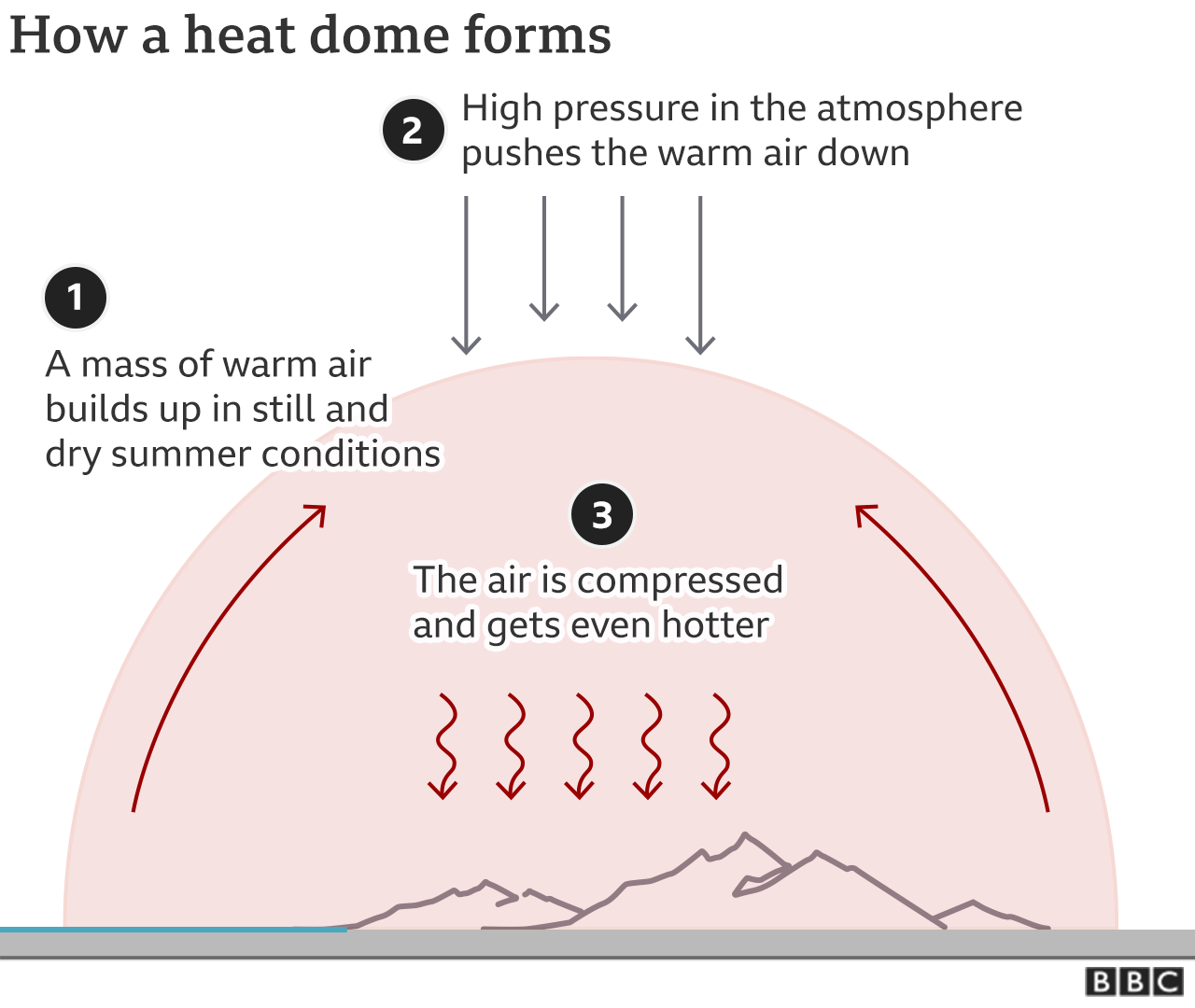
When a storm distorts the jet stream, which is made of currents of fast-flowing air, it is a bit like yanking a skipping rope at one end and seeing the ripples move along it.
These waves cause everything to slow drastically and weather systems can become stuck over the same areas for days on end – as was seen in India earlier this year.
India and Pakistan have already faced five successive heatwaves this year, with Jacobabad, in Pakistan, registering 49C at one point in May.
In the Southern Hemisphere, Argentina, Uruguay, Paraguay and Brazil all saw an historic heatwave in January – many areas reported their hottest day on record.
In the same month, Onslow in Western Australia hit 50.7C, the joint-highest temperature ever reliably recorded in the Southern Hemisphere.
Last year, North America was also hit by long heatwaves. The western Canadian town of Lytton burnt down when temperatures hit 49.6C, breaking the previous record by almost 5C.
Such an intense heatwave would have been virtually impossible without climate change, says the World Weather Attribution network, a collaboration between international climate scientists.
One theory suggests higher temperatures in the Arctic are causing the jet stream to slow, increasing the likelihood of heat domes.
2. More persistent droughts
As heatwaves become more intense and longer, droughts can also worsen.
Less rain falls between heatwaves, so ground moisture and water supplies run dry more quickly. This means the ground takes less time to heat up, warming the air above and leading to more intense heat.

Demand for water from humans and farming puts even more stress on water supply, adding to shortages.
3. More fuel for wildfires
Wildfires can be sparked by direct human involvement – but natural factors can also play a huge part.
The cycle of extreme and long-lasting heat caused by climate change draws more and more moisture out of the ground and vegetation.
These tinder-dry conditions provide fuel for fires, which can spread at an incredible speed.
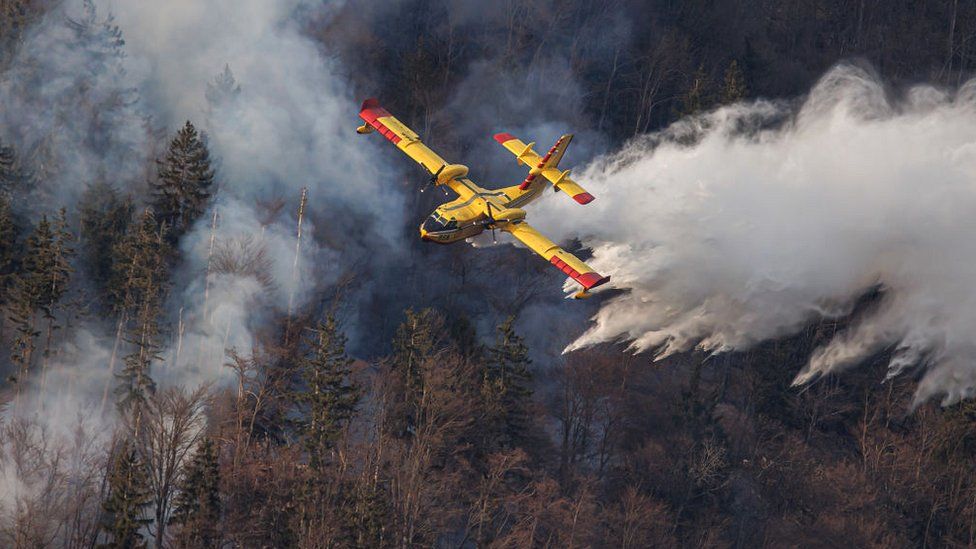
The Northern Hemisphere’s wildfire season begun early in some areas, due to lack of rainfall and unseasonable warmth, and has worsened through July.
Most recently severe wildfires have been reported in France, Spain, Portugal, Greece, Croatia and Albania – with thousands of residents evacuated and several hundreds reported to have died.
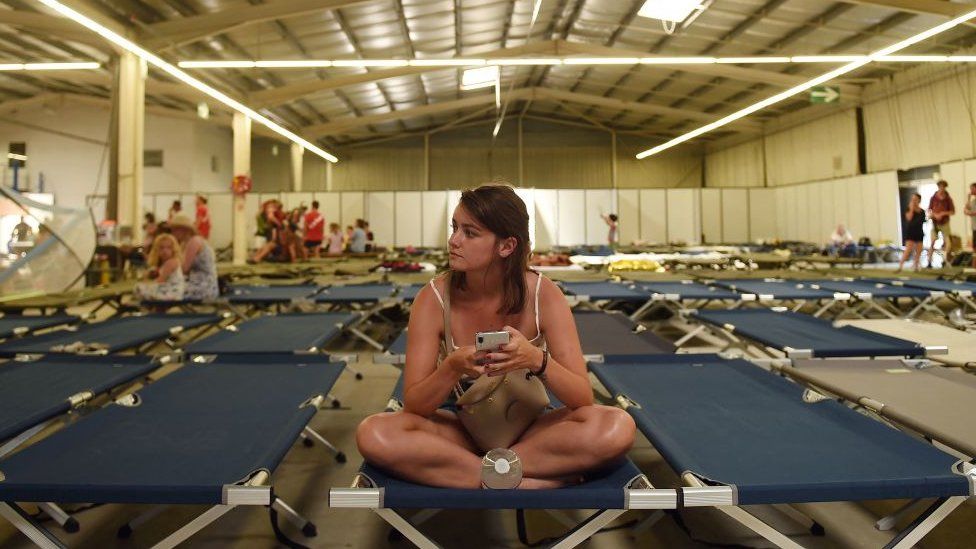
In Canada last summer, heatwaves led to fires which developed so rapidly and explosively that they created their own weather system, forming pyrocumulonimbus clouds. These colossal clouds then produced lightning, igniting more fires.
The frequency of large wildfires has increased dramatically in recent decades.
Compared with the 1970s, fires larger than 10,000 acres (40 sq km) are now seven times more common in western America, according to Climate Central, an independent organisation of scientists and journalists.
4. More extreme rainfall events
In the usual weather cycle, hot weather creates moisture and water vapour in the air, which turns into droplets to create rain.
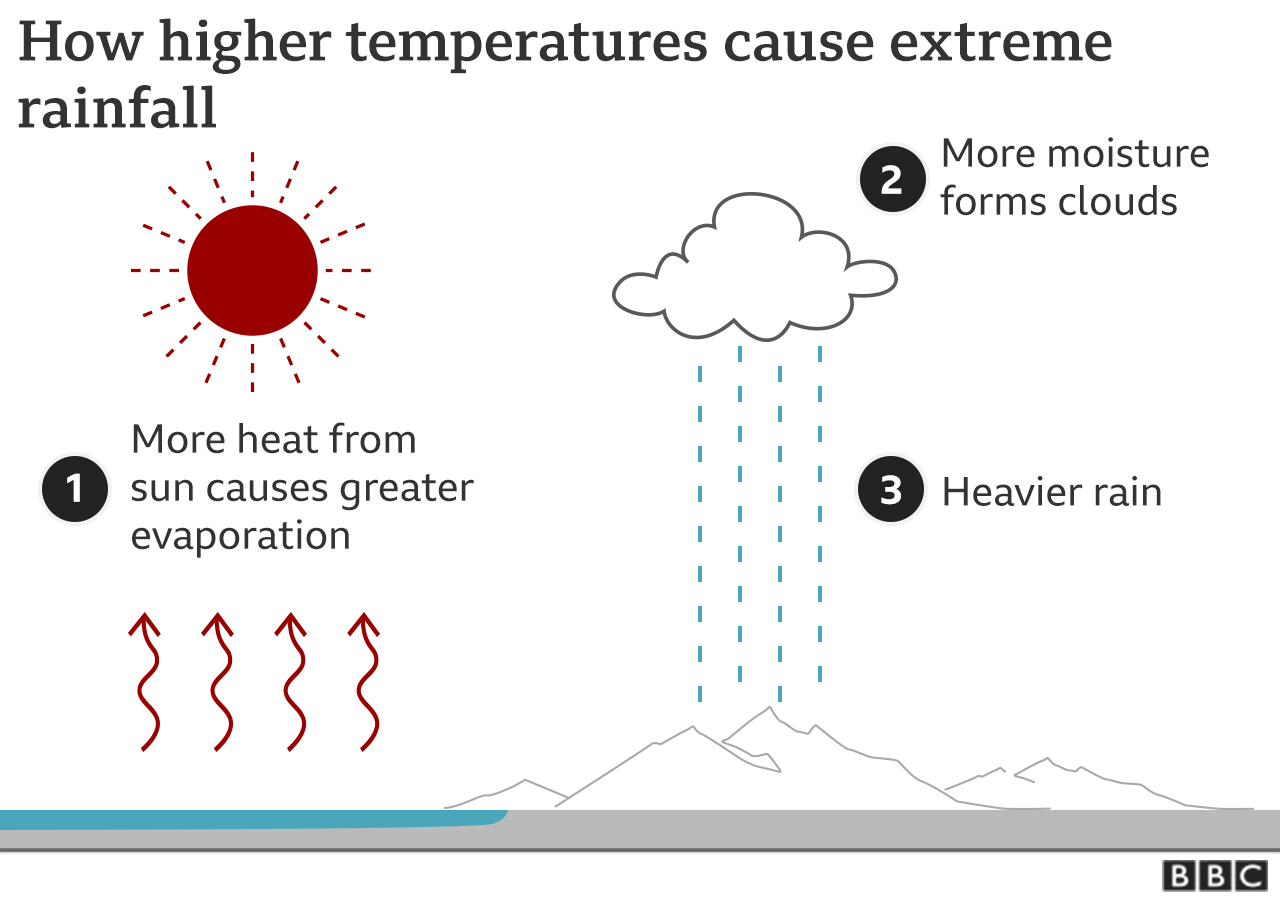
The warmer it becomes, however, the more vapour there is in the atmosphere. This results in more droplets and heavier rainfall, sometimes in a shorter space of time and over a smaller area.
Already this year, floods have hit Spain and also parts of eastern Australia. In a period of just six days Brisbane saw almost 80% of its annual rainfall, while Sydney recorded more than its average annual rainfall in little over three months.
Watch: Record-breaking floods hit Spain’s east coast
These rainfall events are connected to the effects of climate change elsewhere, according to Peter Gleick, a water specialist from the US National Academy of Sciences.
“When areas of drought grow, like in Siberia and western US, that water falls elsewhere, in a smaller area, worsening flooding,” he says.
The weather across the globe will always be highly variable – but climate change is making those variations more extreme.
And the challenge now is not only limiting the further impact people have on the atmosphere but also adapting to and tackling the extremes we are already facing.



